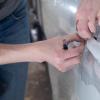What Drivers Should Know About Successive Negligence after a Car Accident
When the injuries suffered in an auto collision are compounded by a medical professional's negligent actions, it is called successive negligence. Victims may be able to recover compensation from the at-fault driver for additional damages from the new injuries or pursue the case with the negligent medical professional.
After a car accident, clinical treatment is critical for a speedy or successful recovery from the injuries. However, the risk of additional injuries or loss of life following a car accident due to negligence or an accident in a medical setting is high. In clinical settings, medical malpractice cases cause an average of 225,000 deaths every year.
Types of Successive Negligence After a Car Accident
In a hospital setting, successive negligence after a car accident can involve:
- ER malpractice
- Incorrect diagnosis and unsafe treatment approaches
- Inability to undertake safe and effective medical procedures to treat injuries
- Prescription errors
- Inability to do required operations and medical procedures
Lawyers may sue the treating doctor for negligent medical care, absolving the original negligent driver of all liabilities for the new injuries or loss of life. In most cases, however, the negligent driver shoulders the liability, and his or her insurance pays for new damage claims for all successive injuries following the accident.
Who Is Responsible for Successive Negligence After a Car Accident
In a hospital environment, successive negligence happens when a clinical specialist, doctor, or clinical office neglects to provide a car accident victim with the proper degree of care as defined by care standards. For instance, if a radiologist neglects to perform a test after an auto accident when the victim is complaining of back pain, further pain, disability, or illnesses, there are grounds for a medical malpractice suit.
However, under the common law principle referred to as "eggshell plaintiff," the first negligent party, for example, the negligent driver that causes the car accident, is held liable for all the successive injuries that can be linked to the original accident. The driver is also held liable for proximal and foreseeable damages, including medical malpractice and other future injuries resulting from the car crash.
Successive Negligence Compensation
When successive negligence leads to extra damages, the compensation responsibility falls on the original negligent party. However, if successive negligence, such as medical malpractice, leads to severe injuries, the doctor becomes the new negligent party. He or she is then held liable for the extra injuries and damages.
People that can be held liable for successive negligence during the medical care for a victim include:
- Emergency room physicians and nurses
- Hospitals and health centers
- Manufacturers of faulty medical products
The victim of the car crash can bring a new injury claim against new negligent parties for damages. Victims may be compensated for:
- All future treatment expenses
- Cost of recovery and new medical operations
- Lost wages and future loss of pay
- Mental anguish and physical pain and suffering
There is no generic template for how successive negligence damage compensation should happen. To arrive at a given value, the patient will need to provide proof of the pain, suffering, and other damages resulting from the second incident of negligence. This must be distinct from the original damages.
Figuring out which injuries should be ascribed to which causal event, or which damages should be allotted to which injuries, can be a problem for the courts when deciding these cases. In many instances, all damages are apportioned between the negligent parties. The obligation to repay all of the losses is shared. One party may pay more in damages than the other, and each party must pay as much as the jury delegates.
More to Read:
Previous Posts:



